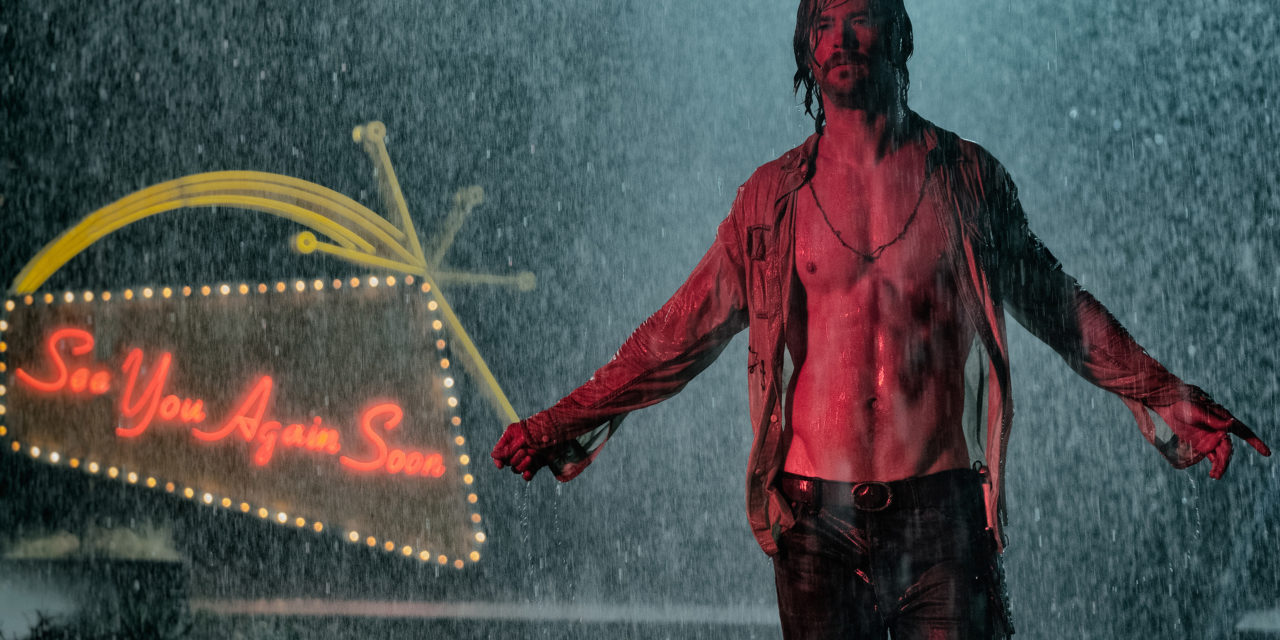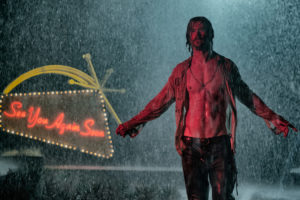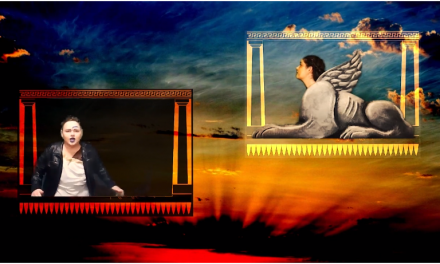The hype for “Bad Times at the El Royale,” exploded into cultural consciousness upon the release of the first trailer. With a style and setting that felt wholly different from the films being released around this time, “Bad Times” promised to be a welcome addition to the genre of stylized period piece mysteries along the lines of director Quentin Tarantino’s “The Hateful Eight.” From the opening seconds of the film, edge-of-your-seat intensity, hilariously integrated nervous comedy, beautifully constructed cinematography and perfectly selected ’60s pop music are on full display.
Set in 1969, the mystery-thriller follows seven strangers — priest Daniel Flynn (Jeff Bridges), home appliance salesman Seymour “Laramie” Sullivan (Jon Hamm), supposed hippie Emily Summerspring (Dakota Johnson), singer Darlene Sweet (Cynthia Erivo), bellhop Miles (Lewis Pullman) and the mysterious cult leader Billy Lee (Chris Hemsworth) — who check into the titular El Royale, a novelty hotel at Lake Tahoe that is split between California and Nevada. These guests harbor secrets about their identities that slowly and violently unveil themselves in exciting and profound ways over the course of the film.
“Bad Times” flaunts its unpredictability with glee. The film shifts perspectives, tones and genres in clever and inventive ways that entertain while giving insight into the characters and possible moral quandaries for the audience to ponder. The constant twist-and-turn storytelling provides a sense of propulsion that is felt even in the quieter and more drawn-out scenes in which characters are seated and talking casually. The film is 141 minutes long, but at no point does the viewer feel tired. Save for a few flat minutes immediately following the explosive prologue, “Bad Times” is absolutely gripping until the credits roll.
Screenwriter Drew Goddard, who also helmed 2012’s horror-comedy “The Cabin in the Woods,” directs “Bad Times” with a distinct visual flair that envelops viewers into the ‘60s and transports them into the classic hotel. The beautiful cinematography only adds to this engrossing and appealing quality, with the primarily gold, orange and yellow color palette contrasted beautifully against the backdrop of dark blues and blacks of shady corridors and the torrential downpour outside. One particular visual highlight is a long take that follows Sullivan as he peers into windows that expose the hotel guests committing suspicious acts. It is an intricate and impressive piece of filmmaking that acts as a form of character and plot exposition, as well as a development of the voyeurism theme that is a major focus for the duration of the film.
The all-star cast delivers excellent performances that carefully expose the many layers of emotion and identities that the characters try to hide. The actors’ fully formed performances allow the audience to understand and connect to almost all of the hotel’s guests. Most of the characters undergo complex transformations throughout the film. With Bridges’ charming Father Daniel Flynn and his supposed heart of gold and Johnson’s suspicious Emily Summerspring and her apparent hippie routine, one might forget Hamm’s enjoyably smarmy home appliance salesman Laramie Seymour Sullivan. The stand-out of the film is relative newcomer Cynthia Erivo, who plays struggling singer Darlene Sweet with a distinct vulnerability, serving as a nice refresher from the larger-than-life characters that populate the hotel.
The film is less violent than it feels, but each time blood spills on the shag carpeting of the hotel, it’s as shocking as the last. This, for the most part, is due to the expertly crafted tension that permeates every scene. Early on, it is clearly established that harm could befall any of the characters, making any scene that hints at the possibility of death all the more unnerving.
The characters are yet another high point the film. Each has a distinct and singular way of speaking that adds to their characterization, as well as being entertaining and sometimes outright hilarious. There is an especially charming running gag in which the bellboy must give a spiel about the grandness that is the El Royale to each person who comes rolling into the hotel.
The film has a lot to say in its runtime, ranging from themes like voyeurism and paranoia to grander ideas of the nature of god, choice and morality in a world chock-full of criminals and lawbreakers seeking some semblance of redemption. These themes are well-integrated into its 1969 setting, with many references to popular celebrities of the time, including the Manson family and former U.S. President Richard Nixon. These references aid the development of the film’s ideas until the thrilling and wholly satisfying conclusion.
Overall, “Bad Times at the El Royale” is one of the best films of the year. The film features a cast and crew at the top of their games, and every frame is an entertaining painting. “Bad Times” will have audiences guessing who’s good, who’s bad and who’s going to survive their stay at the El Royale.
Grade: A
Zack Levin (22B) is from Suffern, New York, majoring in creative writing and marketing. Outside of the Wheel, he serves as the publicity chair for the Alloy Literary Magazine. In his free time, Levin enjoys hiking, watching whatever pops up in his Netflix recommendation feed and playing with his three dogs. Contact Levin at zack.levin@emory.edu.







